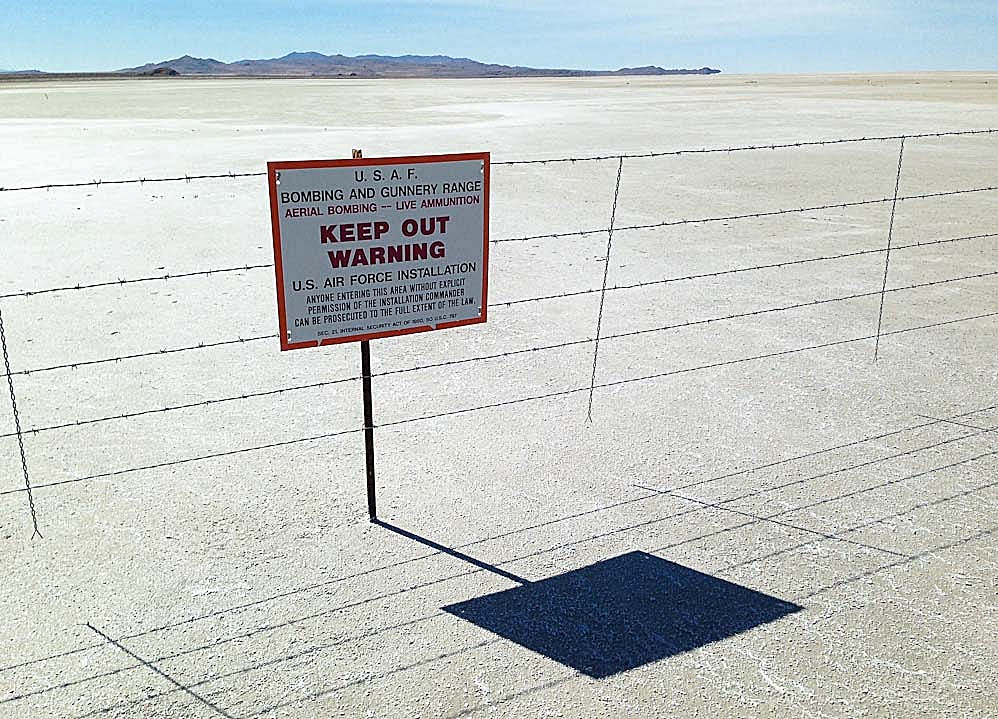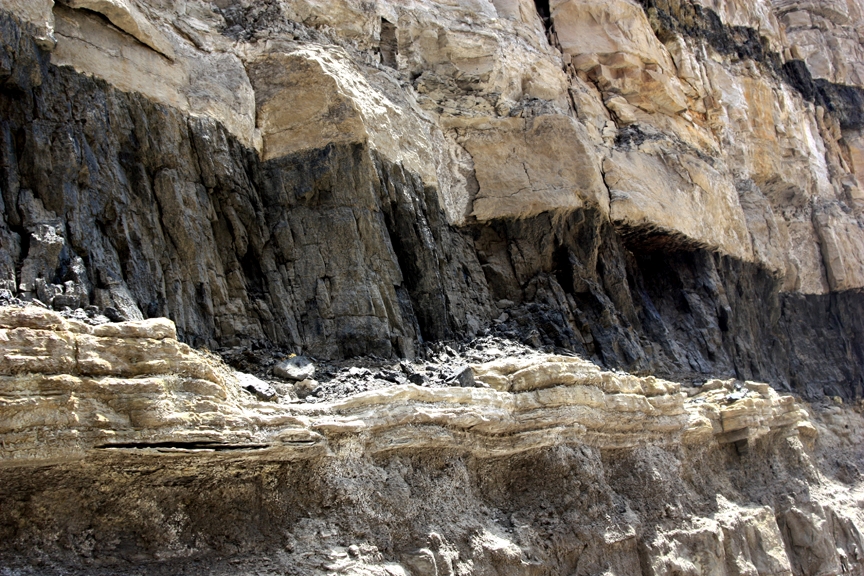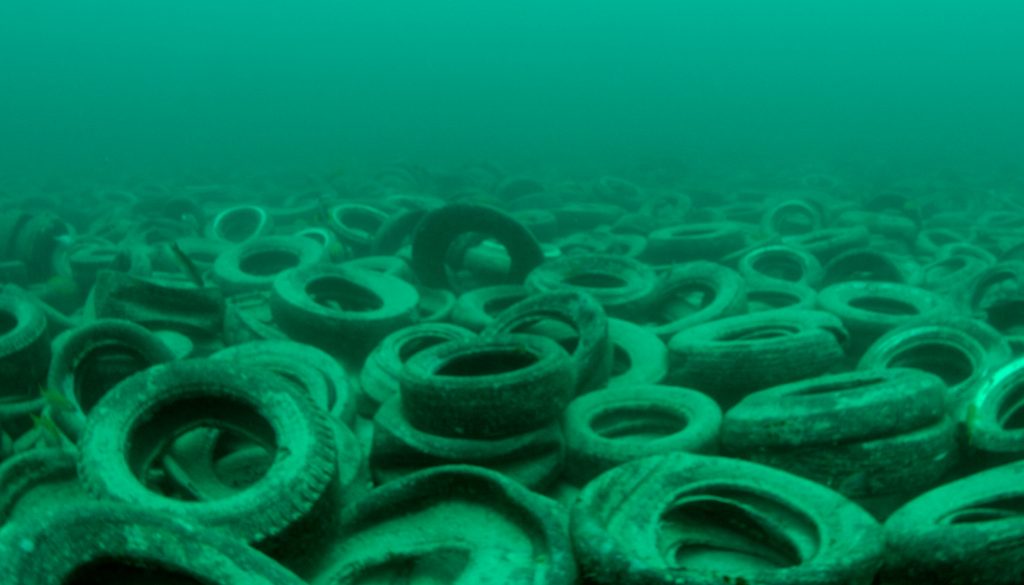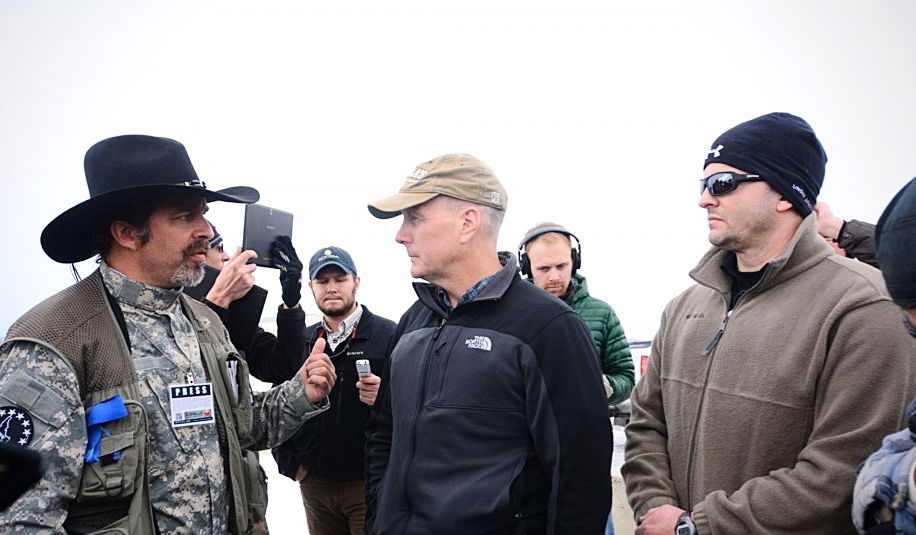According to the draft MOA, local governments will coordinate with the BLM to establish checkpoints for entry, and public safety and emergency response plans for communities adjacent to the weapons testing areas. The MOA also contains a provision addressing the possibility that its weapons testing may go awry.
By Marjorie Haun
On April 6 the Department of Interior posted a draft Memorandum of Agreement (MOA) formulated in coordination with the United States Air Force which would close off large sections of Bureau of Land Management (BLM) land in northwestern Utah for ‘enhanced’ weapons testing. This provision is part of the 2017 National Defense Authorization Act (NDAA), and is open to public comment. According to the draft MOA:
I. PURPOSE
The purpose of this Memorandum of Agreement (MOA) between the Department of the Interior and the Department of the Air Force (hereby after referred to jointly as the Party/Parties) is to cooperatively define the temporary closure process of certain public lands in accordance with the 2017 National Defense Authorization Act (NDAA).
II. BACKGROUND
Continued development of advanced weapons necessitates enhanced test and training requirements in the UTTR. The authorities granted in the 2017 NDAA enable enhanced weapons testing by authorizing temporary closure of public lands adjacent to the UTTR. This MOA describes the means by which the Bureau of Land Management (BLM) acting as the execution agency for Department of the Interior and the Headquarters UTTR acting as the execution agency for the Department of the Air Force will coordinate and implement temporary closures/responsibilities affecting the eight areas of public land (depicted in attachment 1), hereafter addresses as Buffer Areas 1-8. These eight areas are the only BLM managed affected by this MOA.
The Utah Test and Training Range (UTTR) wants to expand its testing into new regions of what is widely known as the ‘Salt Flats.’ ‘Hypersonic’ missiles capability would be tested in what the Department of Interior (DOI) is referring to as the ‘temporary’ closure of some 700,000 acres of land. It appears that the lands slated for ‘temporary closure’ are either contiguous with or in-between existing UTTR lands. Maps are available on the DOI website indicating in detail the 7 areas to be closed. The below map is an overview of the plan.

According to the draft MOA, local governments will coordinate with the BLM to establish checkpoints for entry, and public safety and emergency response plans for communities adjacent to the weapons testing areas. The MOA also contains a provision addressing the possibility that its weapons testing may go awry. It says:
In the extremely unlikely event that a test object should land off DoD land, every effort will be made to immediately identify the location and status of any resulting damage. This will be immediately relayed to local authorities, the Bureau of Land Management and through DoD reporting channels. The Air Force will fully remediate the affected land, returning it to original condition and providing local authorities and Bureau of Land Management officials a description of the event and the ensuing corrective actions. The BLM retains incident final remediation approval authority for federal lands in Buffer Areas 1-8.
Although the agreement is still in the draft stage and has not been signed by the Interior and Air Force secretaries, when it does it will remain in force for 25 years, unless further action is taken for its revocation. The agencies are accepting public comments until May 9. You can go HERE to submit your comments.
You find additional information about this closure by going the Interior Department NEPA website.
Free Range Report
Thank you for reading our latest report, but before you go…
Our loyalty is to the truth and to YOU, our readers!
We respect your reading experience, and have refrained from putting up a paywall and obnoxious advertisements, which means that we get by on small donations from people like you. We’re not asking for much, but any amount that you can give goes a long way to securing a better future for the people who make America great.
[paypal_donation_button]
For as little as $1 you can support Free Range Report, and it takes only a moment.



